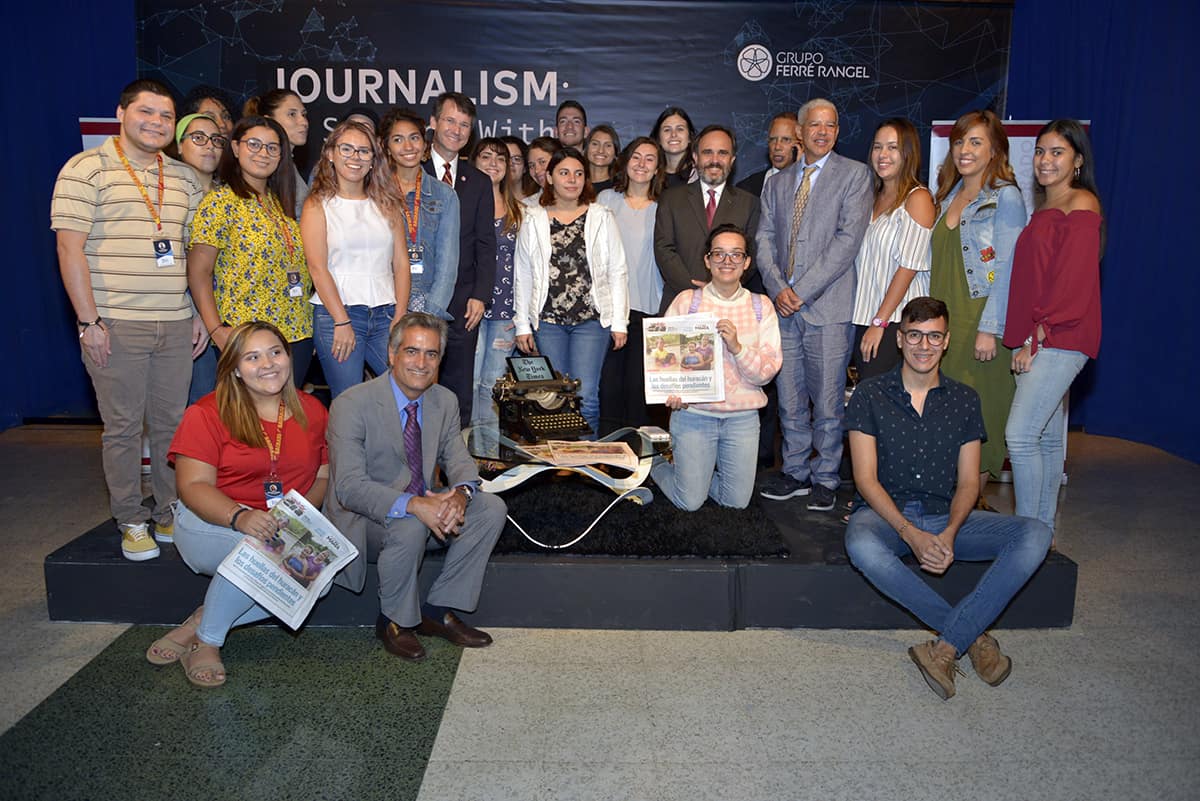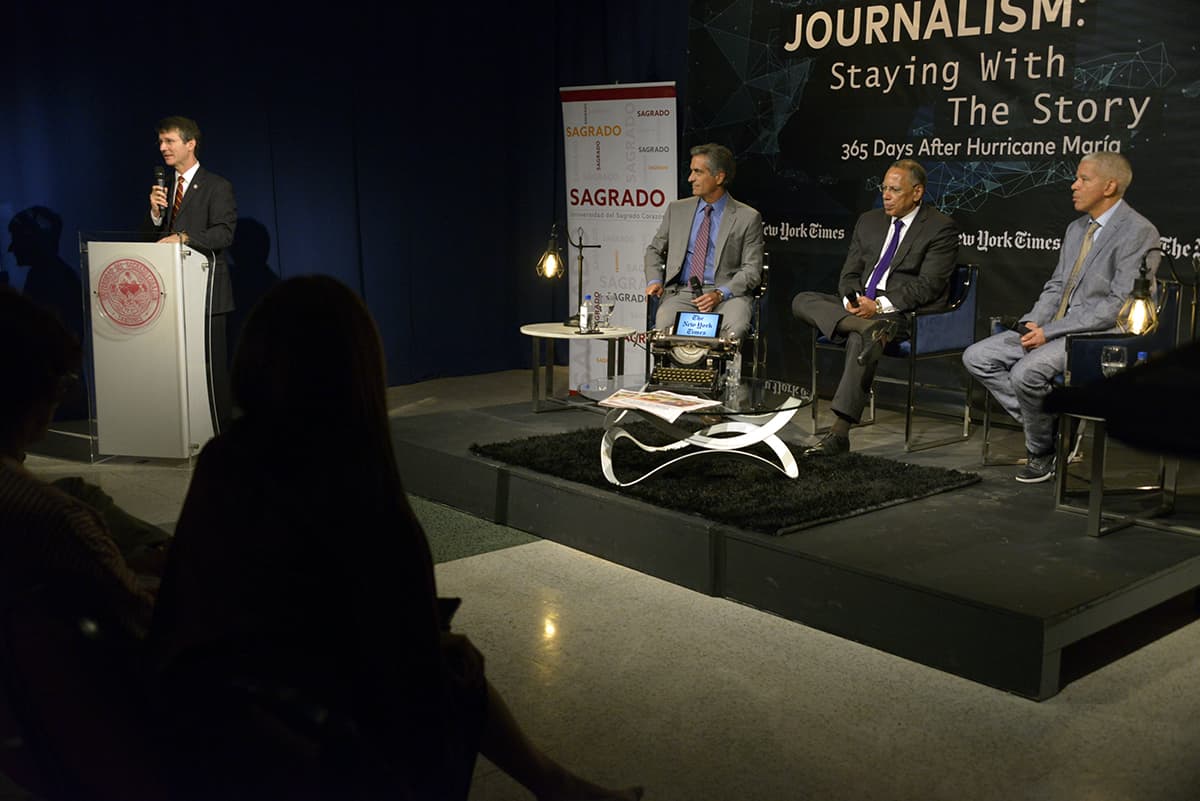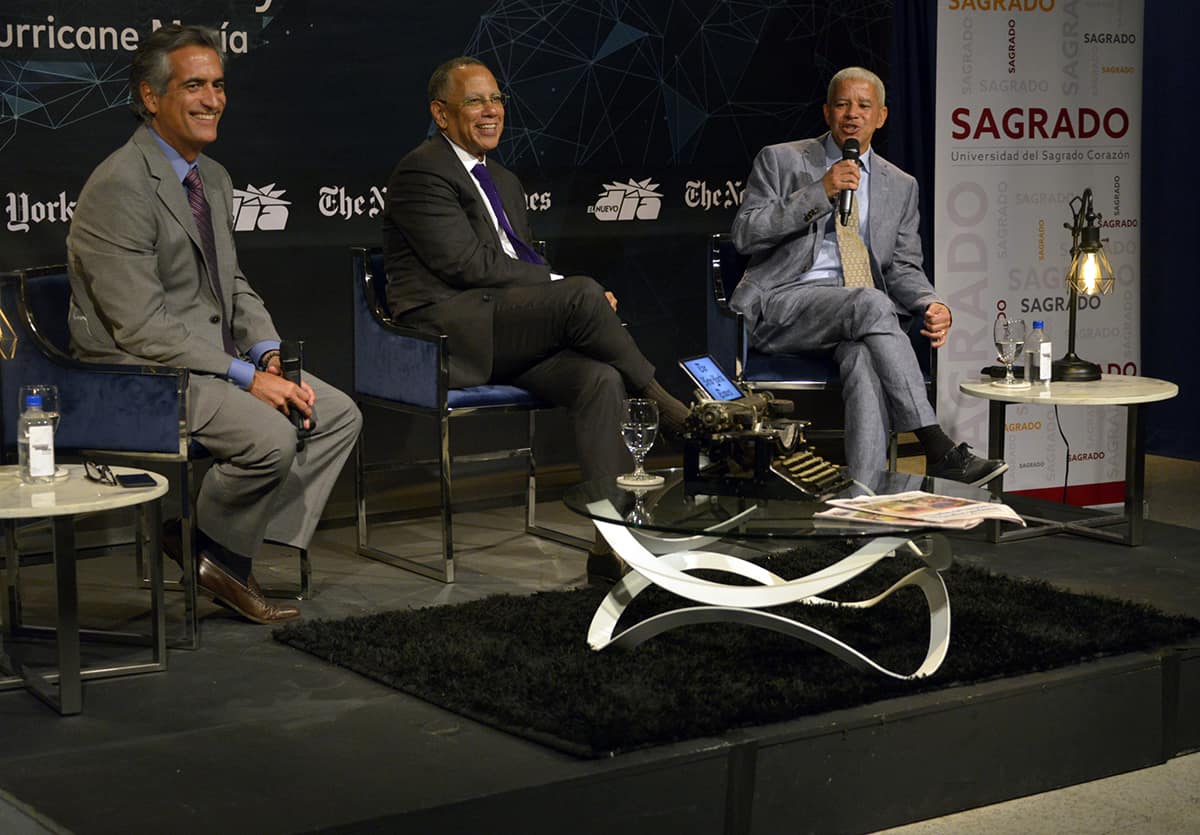
By Salomé Ramírez Vargas
Journalism Student
To commemorate a year since the strike of Hurricane María, the Ferré Rangel School of Communication welcomed the principal editors of The New York Times (NYT), Dean Baquet and Marc Lacey.
The conversation, led by GFR Media’s editorial advisor Luis Alberto Ferré Rangel, covered the importance of going the distance with the story of the hurricane from a journalistic point of view. These influential journalists also allowed the students in attendance to ask them questions that could significantly improve their formation as communicators
The discussion provided a unique opportunity for these future journalists to hear about the importance of the profession they are getting ready to exercise during times of crisis. The president of our university, Gilberto Marxuach Torrós, highlighted the importance of observing this anniversary by celebrating journalism.
“The work of The New York Times, El Nuevo Día, and many other local and international media told the story of María in Puerto Rico, and to this day, they won’t let that story die,” Marxuach said.

After a year of reconstruction, TNYT’s national editor Mark Lacey stated that the work of the newspaper was not about the hurricane, but about the complexities surrounding Puerto Rico. Among other things, he said that the Island has become much more visible after the strike of Hurricane María.
During the question-and-answer session, the topics covered went from the importance of checking facts in times when truth is ever more questioned to what makes a good journalist. The executive editor or TNYT, Dean Baquet, told the students that the essence of journalism is to be honest and fair while digging for the facts.

According to our University’s president, the point of hosting these events is to uphold a commitment to develop a new generation of brave, bold, and innovative journalists that will pursue the truth at all cost no matter where they are.
For journalism student Paola Nieves, this activity is of utmost importance because it helps aspiring journalists understand field work more clearly.
“This type of discussion not only serves as practice for when we begin working in the real world, but also motivates us and piques our curiosity to learn and research the topics discussed,” Nieves said.
The junior said learning about how technology has changed our concept of immediacy caught her attention, and she reflected on this important moment in journalism as a profession at a time when everything is changing constantly.
Finally, both editors stated the importance of a well-rounded education as opposed to spending college years just preparing for a job. Lacey highlighted the relevance of the students’ questions and said they were “on the way to becoming good journalists.”
The students asked great questions, which means they’re well on their way to being great journalists.
— Marc Lacey (@marclacey) September 19, 2018